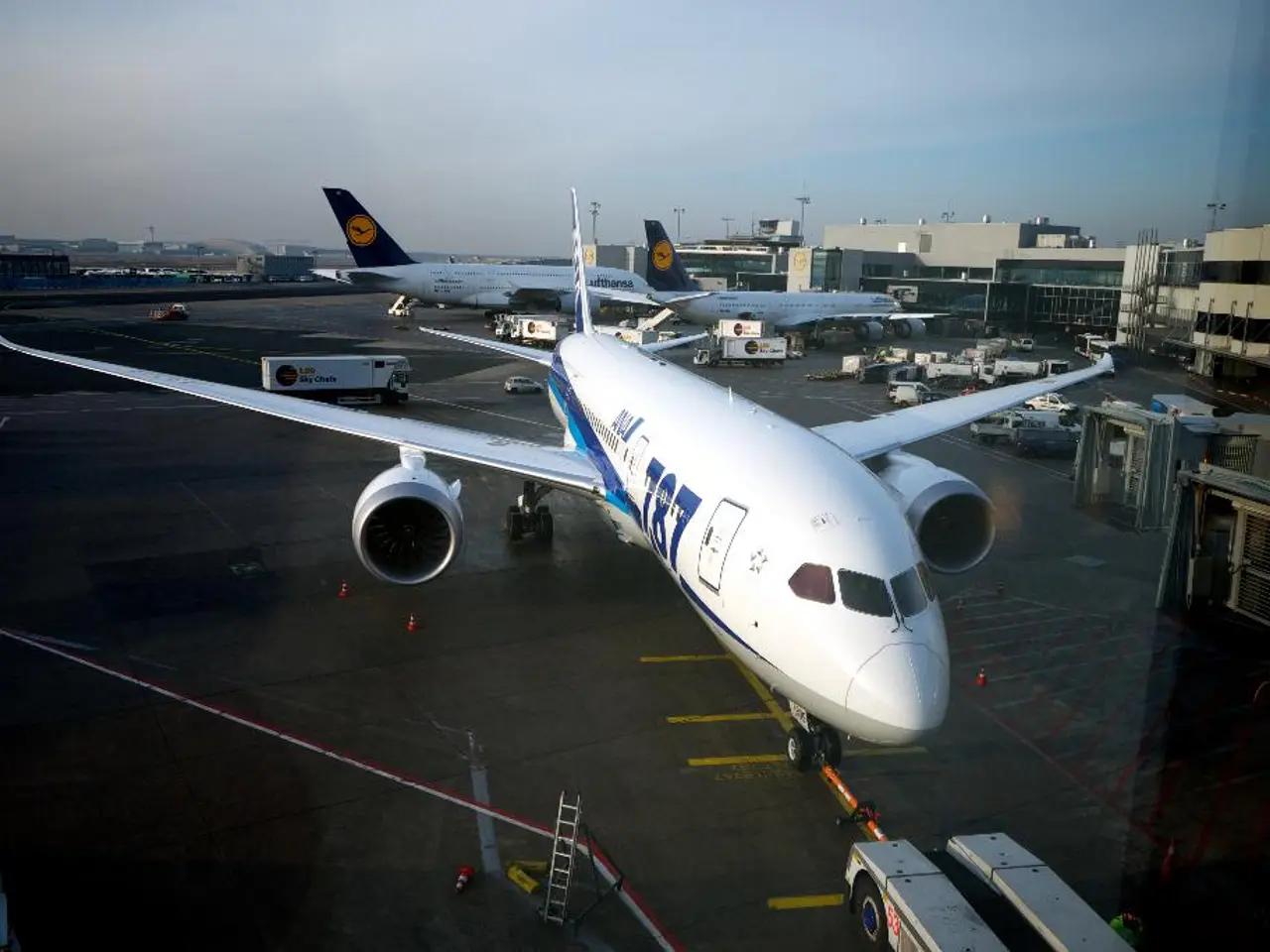Expansion Plans for Hong Kong Airport: A Budget of $18 Billion Allocated
The Hong Kong International Airport (HKIA) is set to undergo a significant transformation with the completion of its Three-Runway System (3RS) in November 2024. This ambitious project, which began in August 2016, includes the construction of a third runway, known as the North Runway, and upgraded terminal facilities such as the expanded Terminal 2 concourse, a new Automated People Mover (APM), and an enhanced Baggage Handling System [1][2][5].
**Cost and Construction:** The 3RS project has been a substantial undertaking, involving extensive land reclamation using deep cement mixing and significant construction to support increased air traffic capacity. The estimated cost of the expansion was around HK$86.2 billion (2010 value). The project aims to meet forecast annual passenger throughput of about 97 million and cargo handling of 8.9 million tonnes by 2030 [1].
**Operational Impact:** The addition of the third runway enables simultaneous use of all three runways, a first in the airport's history, significantly increasing operational efficiency. The long-term goal is to increase hourly flight movements by nearly 50%, from the current 60–70 to about 102 movements per hour. In peak periods, the airport aims to handle up to 75 movements per hour by the end of 2025, with full capacity expected as the system is further phased in [5].
**Business and Economic Impact:** The expanded runway capacity has elevated HKIA’s status as a leading aviation hub in the Asia Pacific region. It has reinforced the airport's ability to support increased passenger and cargo volumes, with a cargo handling potential reaching up to 10 million tonnes annually. This capacity growth is critical for maintaining Hong Kong’s competitive edge in global air transport and logistics, particularly as the airport recovers from pandemic-related declines and positions itself for future growth in passenger and freight traffic [4][5].
**Eco-Friendly Initiatives:** In line with its commitment to sustainability, the 3RS project includes eco-enhanced seawalls, designed with small-scale pools and grooves for aquatic life, promoting the betterment of the marine environment [3].
**Community Engagement:** The Airport Authority has set up community liaison groups in neighbouring districts to encourage proactive communication and address concerns related to the project [2].
In summary, the Hong Kong International Airport's Three-Runway System represents a transformative investment in aviation infrastructure, with substantial construction and financial costs but promising significant enhancements in operational capacity, business growth, and regional connectivity through to 2030 and beyond [1][2][5]. The airport's expansion will make Hong Kong more reachable for tourists and businessmen, further solidifying its position as a global hub for air travel and commerce.
[1] Hong Kong International Airport (2021). Three-Runway System. Retrieved from https://www.hkairport.com/eng/corporate/three-runway-system.html [2] Civil Aviation Department (2021). Hong Kong International Airport. Retrieved from https://www.cedd.gov.hk/en/projects/hkia/ [3] Environmental Protection Department (2021). Eco-enhanced seawalls. Retrieved from https://www.epd.gov.hk/epd/eeo/environment/eco-enhanced-seawalls.html [4] Airport Authority Hong Kong (2021). Three-Runway System: Economic Impact. Retrieved from https://www.hkairport.com/eng/corporate/three-runway-system/economic-impact.html [5] Airport Authority Hong Kong (2021). Three-Runway System: Airport Operations. Retrieved from https://www.hkairport.com/eng/corporate/three-runway-system/airport-operations.html
The Hong Kong International Airport's expansion, driven by the Three-Runway System, will not only increase operational efficiency and hourly flight movements but also solidify the airport's position as a global hub for air travel and commerce, attracting more tourists and businessmen (Business and Economic Impact, Operational Impact). This lifestyle-enhancing transformation will foster continued growth in the region, bolstering Hong Kong's status as a leading aviation hub (Cost and Construction, Eco-Friendly Initiatives). Furthermore, the increased capacity and connectivity provided by the project will facilitate seamless travel experiences for travelers (Community Engagement).




